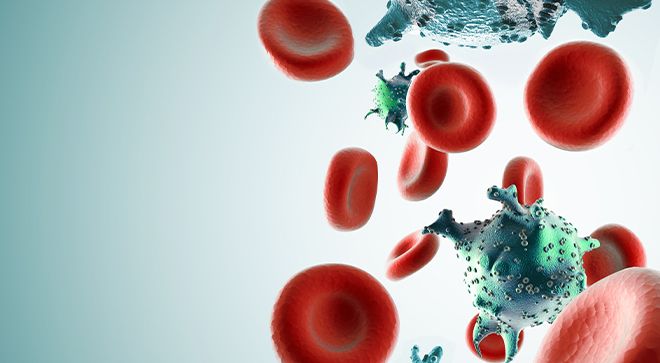Article
Sprycel Granted Priority Review for Pediatric CML
Author(s):
Children with Philadelphia chromosome-positive chronic phase chronic myeloid leukemia (CP Ph+ CML) may soon have a new treatment
Sprycel (dasatinib) was granted a supplemental new drug application (sNDA) by the Food and Drug Administration (FDA) to treat children with Philadelphia chromosome-positive chronic phase chronic myeloid leukemia (CP Ph+ CML).
The agency also granted priority review for a powder for oral suspension (PFOS) formulation of Sprycel, according to Bristol Myers-Squibb, the manufacturer of the tyrosine kinase inhibitor.
The FDA is expected to issue a final decision on the sNDAs by Nov. 9, 2017. The agency’s decision was based on phase 2 results from the CA180-226 trial presented in June at the 22nd Congress of the European Hematology Association and the 2017 ASCO Annual Meeting.
Primary objectives were major cytogenetic response (MCyR) for refractory/intolerant patients and complete cytogenetic response (CCyR) for newly-diagnosed patients. MCyR at least 30 percent and CCyR at least 55 percent were considered of clinical interest.
More than half of patients (55 percent) reached MCyR >30 percent within three months. “Median duration of response has not been attained on this cohort yet, and responses at 12 and 24 months exceeded 90 percent,” lead author Lia Gore, M.D., associate professor in the division of oncology at the University of Colorado School of Medicine said when presenting the data at the 2017 ASCO Annual Meeting.
For newly diagnosed patients, 61 percent of those assigned to tablets and 70 percent of the PFOS group reached cumulative rate of CCyR at least 55 percent as early as six months. The median duration has not been reached and, like the refractory/intolerant group, response rates were greater than 90 percent at 12 and 24 months.
The cumulative rate of major molecular response (MMR) in the refractory/intolerant cohort was 41 percent at 12 months, 55 percent at 24 months, and continued increasing over time. At 12 months, MMR was 57 percent for newly-diagnosed patients assigned to tablets and 45 percent for those assigned to PFOS. Those responses increased to 75 percent and 64 percent, respectively, at 24 months.
At 48 months, the estimated progression-free survival (PFS) rate was 78 percent in the refractory/intolerant group and 93 percent for newly-diagnosed patients regardless of treatment formulation. Gore added that median PFS has not been reached because only seven patients in each cohort have experienced progression.
“We believe our data suggest that dasatinib could be considered as a new standard of care for children with CML in chronic phase,” Gore said.
CA180-226 is an international, open-label nonrandomized prospective study conducted in 18 countries from March 2009 to September 2014. Gore presented results from pediatric patients with CML in chronic phase, one group with imatinib-refractory or -intolerant disease (29 patients) and the other with newly-diagnosed patients.
Patients in the relapsed/intolerant group were assigned to 60 mg/m2 Sprycel tablets. Newly-diagnosed patients were divided into two treatment groups, one assigned to 60 mg/m2 Sprycel tablets (51 patients) and the other to 72 mg/m2 PFOS (33 patients). Gore said the groups were not designed to be compared with each other.
Treatment continued until progression, toxicity or withdrawal.
Of patients treated, 48 percent of the refractory/intolerant group and 73 percent of the newly-diagnosed patients remain on-study. Ten percent of newly diagnosed patients assigned to tablets discontinued due to progression, compared with 3 percent of newly-diagnosed patients assigned to PFOS and 17 percent for refractory/intolerant patients. Patients assigned to PFOS could cross over to tablets after 12 months of treatment, and 22 patients did so.
Median duration of treatment for refractory/intolerant patients was 49.91 months and median follow-up was 62.4 months. For newly diagnosed patients treated with tablets, median duration of treatment was 52.24 months and median follow-up was 54.3 months. For the PFOS newly diagnosed group, median duration of treatment was 27.40 months and median follow-up was 32.5 months. Gore said the PFOS group began enrollment after the other two cohorts.
One patient in the refractory/intolerant group who discontinued for progression died of a gastrointestinal bleed a year after going off treatment.
Overall, only two patients in the study experienced grade 3/4 adverse events: one patient in the refractory/intolerant cohort experienced myalgia/arthralgia and one newly-diagnosed patient assigned to tablets experienced hemorrhage.
“There were no occurrences of pleural effusion, pericardial effusion, pulmonary edema, pulmonary hypertension, or any vascular occlusive events in patients noted on this trial,” Gore said.
She added that investigators observed only five growth and development events, and all were grade 1/2.




